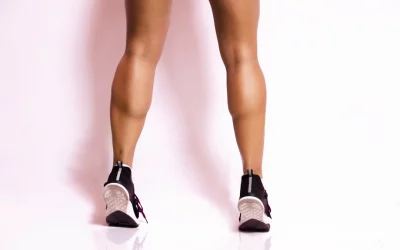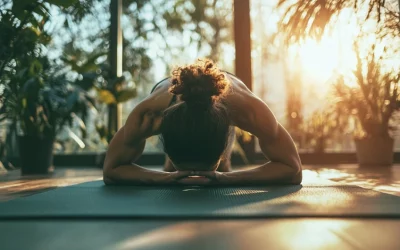Life can throw curve balls at you, despite your best intentions. Sometimes, you work hard on achieving your flexibility or improving your fitness levels, only to have a setback (or life in general) undo your progress. We want to help you be able to get flexible again after losing your flexibility with simple steps and paradigm shifts.
Why do people lose flexibility?
There are a variety of reasons why people might see a decrease in flexibility and mobility, including (but not limited to):
- The aging process
- Surgery, accidents, or injuries
- Sedentary lifestyle
- Pregnancy
A step towards regaining your flexibility after you lose it.
We cannot change the past- we can only move forward. It isn’t always easy to start again but by choosing to take just one step forward, you can begin to change your life forever. You can regain your flexibility again. It may not happen overnight, but with consistent effort, you will see wonderful results!
Start with small steps and gradually build yourself up.
Even if you were a top-notch athlete beforehand, it is safest for your body and you have a higher chance of success when you start with baby steps. Start with small steps, such as stretching for just 3 minutes daily. While this may not seem like much, it allows your body a chance to start moving safely, without being overworked, and builds strength without injury.
3 minutes may not seem like an effective stretching routine length, but you will feel the positive effects in your body almost immediately. Add a minute or two as you begin to feel comfortable stretching, and soon you will be on an injury-free path to mobility.
Even if you only do 3 minutes every day, for 30 days, that is the equivalent of an hour and a half of stretching over a month, and that is a great start! If you want to see the compound effect of small steps, there was one coach who was able to take a losing cycling team to success by improving several small things by just 1%.
Starting small also makes you more likely to form a stretching habit, as opposed to stretching for too long when starting up again, potentially injuring yourself, and not continuing to stretch. As you begin to regain your mobility, gradually increase your stretching time by a minute or two at a time.
If you’re new to stretching, read up on how to start stretching safely to keep your body feeling great as you begin this new form of exercise!
Increase your overall motion and physical activity levels.
Stretching encourages good circulation and blood flow, as well as it can help you achieve your full range of motion, but it isn’t the only way to achieve these benefits. Increasing your physical activity levels a little at a time can also help you to improve your flexibility.
If you are only going up one or two floors, take the stairs. If stairs are bad for your knees, try frequent and short walks, even just pacing your kitchen for five minutes. You can also have some fun with your exercise and have mini dance parties to your favourite music!
Seek professional help.
Sometimes, we need a bit of help in regaining our flexibility. If you already have a physiotherapist, chiropractor, or masseuse you see regularly, ask them to help you address your concerns. If not, try to find a professional nearby that has high-quality work, and you get along with well. They can help you in areas of concern and work on muscle groups you might have trouble accessing yourself.
If you’re physically feeling fine but need a bit of help with your flexibility training, you may want to seek out a personal trainer. They can help guide you through a stretching routine and provide suggestions on how to improve your fitness overall.
Why would you want to become flexible again after losing your flexibility?
There are many reasons you may want to increase your mobility, but increasing your flexibility can mean:
- Being able to move without assistance.
- Improving your balance.
- Increasing your functional strength.
- Preventing future injuries.
- Reducing chronic pain.
- Increasing your energy levels.
- Feeling better overall.
It’s not too late to begin regaining your flexibility! Start with small steps and you will gradually begin to see large improvements. The key is not big, dramatic efforts, but rather consistent work to achieve your goals.
If you need any help or encouragement along your journey, reach out to us, and one of our team will issue you a personalized stretching challenge to help keep you motivated!
Any links included are for reference, additional information, or entertainment value only, without monetary compensation. Contact us on social media or at [email protected]. Photos courtesy of Unsplash.
This article is not intended to act as or replace medical advice. Please talk to your healthcare practitioner if you have any concerns.
Written by Kayla Willsey
Updated September 23, 2021






